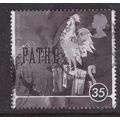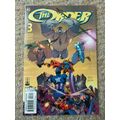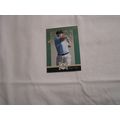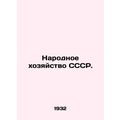Musician - Frank Zappa 1988 by Michaelangelo Albonico - Dutch postcard
- Condition : Used
- Dispatch : 2 Days
- Brand : None
- ID# : 128323414
- Quantity : 1 item
- Views : 596
- Location : United Kingdom

- Seller : justthebook (+1703)
- Barcode : None
- Start : Mon 19 May 2014 20:17:55 (BST)
- Close : Run Until Sold
- Remain : Run Until Sold
More Listings from This Seller view all
Seller's Description
- Postcard
- Picture / Image: Frank Zappa, 1988 - by Michaelangelo Albonico
- Publisher: Art Unlimited, Amsterdam
- Postally used: no
- Stamp: n/a
- Postmark(s): n/a
- Sent to: n/a
- Notes / condition:
Please ask if you need any other information and I will do the best I can to answer.
Image may be low res for illustrative purposes - if you need a higher definition image then please contact me and I may be able to send one.
------------------------------------------------
Postage & Packing:
UK (incl. IOM, CI & BFPO): 99p
Europe: £1.60
Rest of world (inc. USA etc): £2.75
No additional charges for more than one postcard. You can buy as many postcards from me as you like and you will just pay the fee above once. (If buying postcards with other things such as books, please contact or wait for invoice before paying).
Payment Methods:
UK - PayPal, Cheque (from UK bank) or postal order
Outside UK: PayPal ONLY (unless otherwise stated) please. NO non-UK currency checks or money orders (sorry).
NOTE: All postcards are sent in brand new stiffened envelopes which I have bought for the task. These are specially made to protect postcards and you may be able to re-use them. In addition there are other costs to sending so the above charge is not just for the stamp!
I will give a full refund if you are not fully satisfied with the postcard.
----------------------------------------------
Text from the free encyclopedia WIKIPEDIA may appear below to give a little background information (internal links may not work) :
*************
Frank Vincent Zappa[1] (December 21, 1940 – December 4, 1993) was an American musician, bandleader, songwriter, composer, recording engineer, record producer, and film director. In a career spanning more than 30 years, Zappa composed rock, jazz, orchestral and musique concrète works. He also directed feature-length films and music videos, and designed album covers. Zappa produced almost all of the more than 60 albums he released with the band The Mothers of Invention and as a solo artist. While in his teens, he acquired a taste for 20th-century classical composers such as Edgard Varèse, Igor Stravinsky, and Anton Webern along with 1950s rhythm and blues music. He began writing classical music in high school, while at the same time playing drums in rhythm and blues bands; he later switched to electric guitar.
Zappa was a self-taught composer and performer, and his diverse musical influences led him to create music that was often difficult to categorize. His 1966 debut album with The Mothers of Invention, Freak Out!, combined songs in conventional rock and roll format with collective improvisations and studio-generated sound collages. His later albums shared this eclectic and experimental approach, irrespective of whether the fundamental format was rock, jazz or classical. His lyrics—often humorously—reflected his iconoclastic view of established social and political processes, structures and movements. He was a strident critic of mainstream education and organized religion, and a forthright and passionate advocate for freedom of speech, self-education, political participation and the abolition of censorship.
He was a highly productive and prolific artist and gained widespread critical acclaim. He had some commercial success, particularly in Europe, and worked as an independent artist for most of his career. He also remains a major influence on musicians and composers. Zappa was posthumously inducted into the Rock and Roll Hall of Fame in 1995 and received the Grammy Lifetime Achievement Award in 1997. Zappa was married to Kathryn J. ""Kay"" Sherman from 1960 to 1964. In 1967, he married Adelaide Gail Sloatman, with whom he remained until his death from prostate cancer in 1993. They had four children: Moon, Dweezil, Ahmet and Diva. In 2004, Rolling Stone magazine ranked him at No. 71 on its list of the ""100 Greatest Artists of All Time"", and in 2011 at No. 22 on its list of the ""100 Greatest Guitarists of All Time"".
Zappa was born in Baltimore, Maryland. His mother, Rose Marie (née Colimore), was of Italian and French ancestry; his father, Francis Vincent Zappa, was an immigrant from Partinico, Sicily.[2] Zappa, the eldest of four children, was raised in an Italian-American household where Italian was spoken often by his grandparents.[3][4] The family moved often because his father, a chemist and mathematician, worked in the defense industry. After a time in Florida in the 1940s, the family returned to Maryland, where Zappa's father worked at the Edgewood Arsenal chemical warfare facility of the Aberdeen Proving Ground. Due to their home's proximity to the arsenal, which stored mustard gas, gas masks were kept in the home.[5] This had a profound effect on Zappa, and references to germs, germ warfare and the defense industry occur throughout his work.[6]
Zappa was often sick as a child, suffering from asthma, earaches and sinus problems. A doctor treated his sinusitis by inserting a pellet of radium into each of Zappa's nostrils; little was known about the potential dangers of even small amounts of therapeutic radiation.[7] Nasal imagery and references appear in his music and lyrics, as well as in the collage album covers created by his long-time collaborator Cal Schenkel. Many of Zappa's childhood diseases may have been due to exposure to mustard gas. His health worsened when he lived in Baltimore.[5][7] In 1952, his family relocated for reasons of health.[8] They next moved to Monterey, California, where his father taught metallurgy at the Naval Postgraduate School. They soon moved to Claremont, California,[9] then to El Cajon, before finally settling in San Diego.[10]
Zappa recalled his parents being ""pretty religious"" and tried to make him to go to Catholic school despite his resentment. Zappa showed disgust towards religion (Christianity in particular) because he believed that it promotes ignorance and anti-intellectualism.[11]
Zappa joined his first band at Mission Bay High School in San Diego. He was the band's drummer.[13] About the same time his parents bought a phonograph, which allowed him to develop his interest in music, and to begin building his record collection.[14] R&B singles were early purchases, starting a large collection he kept for the rest of his life.[15] He was interested in sounds for their own sake, particularly the sounds of drums and other percussion instruments. By age 12, he had obtained a snare drum and began learning the basics of orchestral percussion.[13] Zappa's deep interest in modern classical music began[16] when he read a LOOK magazine article about the Sam Goody record store chain that lauded its ability to sell an LP as obscure as The Complete Works of Edgard Varèse, Volume One.[17] The article described Varèse's percussion composition Ionisation, produced by EMS Recordings, as ""a weird jumble of drums and other unpleasant sounds"". Zappa decided to seek out Varèse's music. After searching for over a year, Zappa found a copy (he noticed the LP because of the ""mad scientist"" looking photo of Varèse on the cover). Not having enough money with him, he persuaded the salesman to sell him the record at a discount.[17] Thus began his lifelong passion for Varèse's music and that of other modern classical composers.
Zappa grew up influenced by avant-garde composers such as Varèse, Halim El-Dabh,[18] Igor Stravinsky, and Anton Webern, R&B and doo-wop groups (particularly local pachuco groups), and modern jazz. His own heterogeneous ethnic background, and the diverse social and cultural mix in and around greater Los Angeles, California, were crucial in the formation of Zappa as a practitioner of underground music and of his later distrustful and openly critical attitude towards ""mainstream"" social, political and musical movements. He frequently lampooned musical fads like psychedelia, rock opera and disco.[19][20] Television also exerted a strong influence, as demonstrated by quotations from show themes and advertising jingles found in his later works.[21]
By 1956, the Zappa family had moved to Lancaster, a small aerospace and farming town in the Antelope Valley of the Mojave Desert close to Edwards Air Force Base, in northern Los Angeles County. Zappa's mother encouraged him in his musical interests. Although she disliked Varèse's music, she was indulgent enough to give her son a long distance call to the composer as a 15th birthday present.[17] Unfortunately, Varèse was in Europe at the time, so Zappa spoke to the composer's wife. He later received a letter from Varèse thanking him for his interest, and telling him about a composition he was working on called ""Déserts"". Living in the desert town of Lancaster, Zappa found this very exciting. Varèse invited him to visit if he ever came to New York. The meeting never took place (Varèse died in 1965), but Zappa framed the letter and kept it on display for the rest of his life.[16][22]
At Antelope Valley High School, Zappa met Don Vliet (who later expanded his name to Don Van Vliet and adopted the stage name Captain Beefheart). Zappa and Vliet became close friends, sharing an interest in R&B records and influencing each other musically throughout their careers.[23] Around the same time, Zappa started playing drums in a local band, The Blackouts.[19] The band was racially diverse, and included Euclid James ""Motorhead"" Sherwood who later became a member of The Mothers of Invention. Zappa's interest in the guitar grew, and in 1957 he was given his first guitar. Among his early influences were Johnny ""Guitar"" Watson, Howlin' Wolf and Clarence ""Gatemouth"" Brown.[24] (In the 1970s and '80s, he invited Watson to perform on several albums.) Zappa considered soloing as the equivalent of forming ""air sculptures"",[25] and developed an eclectic, innovative and highly personal style.
Zappa's interest in composing and arranging proliferated in his last high-school years. By his final year, he was writing, arranging and conducting avant-garde performance pieces for the school orchestra.[26] He graduated from Antelope Valley High School in 1958, and later acknowledged two of his music teachers on the sleeve of the 1966 album Freak Out![27] Due to his family's frequent moves, Zappa attended at least six different high schools, and as a student he was often bored and given to distracting the rest of the class with juvenile antics.[28] He left community college after one semester, and maintained thereafter a disdain for formal education, taking his children out of school at age 15 and refusing to pay for their college.[29]
Zappa left home in 1959, and moved into a small apartment in Echo Park, Los Angeles. After meeting Kathryn J. ""Kay"" Sherman during his short stay at Pomona College, they moved in together in Ontario, and were married December 28, 1960.[30] Zappa worked for a short period in advertising. His sojourn in the commercial world was brief, but gave him valuable insights into its workings.[31] Throughout his career, he took a keen interest in the visual presentation of his work, designing some of his album covers and directing his own films and videos.
Zappa attempted to earn a living as a musician and composer, and played different nightclub gigs, some with a new version of The Blackouts.[32] Financially more rewarding were Zappa's earliest professional recordings, two soundtracks for the low-budget films The World's Greatest Sinner (1962) and Run Home Slow (1965). The former score was commissioned by actor-producer Timothy Carey and recorded in 1961. It contains many themes that appeared on later Zappa records.[33] The latter soundtrack was recorded in 1963 after the film was completed, but it was commissioned by one of Zappa's former high school teachers in 1959 and Zappa may have worked on it before the film was shot.[34] Excerpts from the soundtrack can be heard on the posthumous album The Lost Episodes (1996).
During the early 1960s, Zappa wrote and produced songs for other local artists, often working with singer-songwriter Ray Collins and producer Paul Buff. Their ""Memories of El Monte"" was recorded by The Penguins, although only Cleve Duncan of the original group was featured.[35] Buff owned the small Pal Recording Studio in Cucamonga, which included a unique five-track tape recorder he had built. At that time, only a handful of the most sophisticated commercial studios had multi-track facilities; the industry standard for smaller studios was still mono or two-track.[36] Although none of the recordings from the period achieved major commercial success, Zappa earned enough money to allow him to stage a concert of his orchestral music in 1963 and to broadcast and record it.[37] He appeared on Steve Allen's syndicated late night show the same year, in which he played a bicycle as a musical instrument.[38] With Captain Beefheart, Zappa recorded some songs under the name of The Soots. They were rejected by Dot Records for having ""no commercial potential"", a verdict Zappa subsequently quoted on the sleeve of Freak Out![39]
In 1964, after his marriage started to break up, he moved into the Pal studio and began routinely working 12 hours or more per day recording and experimenting with overdubbing and audio tape manipulation. This established a work pattern that endured for most of his life.[40] Aided by his income from film composing, Zappa took over the studio from Paul Buff, who was now working with Art Laboe at Original Sound. It was renamed Studio Z.[41] Studio Z was rarely booked for recordings by other musicians. Instead, friends moved in, notably James ""Motorhead"" Sherwood.[42] Zappa started performing as guitarist with a power trio, The Muthers, in local bars in order to support himself.[43]
An article in the local press describing Zappa as ""the Movie King of Cucamonga"" prompted the local police to suspect that he was making pornographic films.[44] In March 1965, Zappa was approached by a vice squad undercover officer, and accepted an offer of $100 to produce a suggestive audio tape for an alleged stag party. Zappa and a female friend recorded a faked erotic episode. When Zappa was about to hand over the tape, he was arrested, and the police stripped the studio of all recorded material.[44] The press was tipped off beforehand, and next day's The Daily Report wrote that ""Vice Squad investigators stilled the tape recorders of a free-swinging, a-go-go film and recording studio here Friday and arrested a self-styled movie producer"".[45] Zappa was charged with ""conspiracy to commit pornography"".[46] This felony charge was reduced and he was sentenced to six months in jail on a misdemeanor, with all but ten days suspended.[47] His brief imprisonment left a permanent mark, and was key in the formation of his anti-authoritarian stance.[48] Zappa lost several recordings made at Studio Z in the process, as the police only returned 30 out of 80 hours of tape seized.[49] Eventually, he could no longer afford to pay the rent on the studio and was evicted.[50] Zappa managed to recover some of his possessions before the studio was torn down in 1966.[51]
In 1965, Zappa was approached by Ray Collins who asked him to take over as the guitarist in local R&B band the Soul Giants, following a fight between Collins and the group's original guitarist.[3] Zappa accepted, and soon he assumed leadership and the role as co-lead singer (even though he never considered himself a singer[52]). He convinced the other members that they should play his music to increase the chances of getting a record contract.[53] The band was renamed the Mothers, coincidentally on Mother's Day.[54] The group increased their bookings after beginning an association with manager Herb Cohen, while they gradually gained attention on the burgeoning Los Angeles underground music scene.[55] In early 1966, they were spotted by leading record producer Tom Wilson when playing ""Trouble Every Day"", a song about the Watts Riots.[56] Wilson had earned acclaim as the producer for Bob Dylan and Simon & Garfunkel, and was notable as one of the few African-Americans working as a major label pop music producer at this time. Wilson signed The Mothers to the Verve division of MGM, which had built up a strong reputation for its releases of modern jazz recordings in the 1940s and 1950s, but was attempting to diversify into pop and rock audiences. Verve insisted that the band officially rename themselves The Mothers of Invention as Mother was short for motherfucker—a term that apart from its profane meanings can denote a skilled musician.[57]
With Wilson credited as producer, The Mothers of Invention, augmented by a studio orchestra, recorded the groundbreaking Freak Out! (1966) which, after Bob Dylan's Blonde on Blonde, was the second rock double album ever released. It mixed R&B, doo-wop, musique concrète,[58] and experimental sound collages that captured the ""freak"" subculture of Los Angeles at that time.[59] Although he was dissatisfied with the final product—in a late '60s radio interview (included in the posthumous MOFO Project/Object compilation) Zappa recounted that the side-long closing track ""Return of the Son of Monster Magnet"" was intended to be the basic track for a much more complex work which Verve did not allow him to complete—Freak Out immediately established Zappa as a radical new voice in rock music, providing an antidote to the ""relentless consumer culture of America"".[60] The sound was raw, but the arrangements were sophisticated. While recording in the studio, some of the additional session musicians were shocked that they were expected to read the notes on sheet music from charts with Zappa conducting them, since it was not standard when recording rock music.[61] The lyrics praised non-conformity, disparaged authorities, and had dadaist elements. Yet, there was a place for seemingly conventional love songs.[62] Most compositions are Zappa's, which set a precedent for the rest of his recording career. He had full control over the arrangements and musical decisions and did most overdubs. Wilson provided the industry clout and connections and was able to provide the group with the financial resources needed.[63] Although Wilson was able to provide Zappa and the Mothers with an extraordinary degree of artistic freedom for the time, the recording did not go entirely as planned. In a surviving 1967 radio interview, Zappa explained that the album's outlandish 11-minute closing track, ""Return of the Son of Monster Magnet"" was in fact an unfinished piece. The track (as it appears on the album) was created to act as the backing track for a much more complex work, but MGM refused to approve the additional recording time Zappa needed to complete it, so (much to his chagrin) it was issued in this unfinished form.[64]
type=printed postcards
theme=music
number of items=single
period=1945 - present
postage condition=unposted
Listing Information
| Listing Type | Gallery Listing |
| Listing ID# | 128323414 |
| Start Time | Mon 19 May 2014 20:17:55 (BST) |
| Close Time | Run Until Sold |
| Starting Bid | Fixed Price (no bidding) |
| Item Condition | Used |
| Bids | 0 |
| Views | 596 |
| Dispatch Time | 2 Days |
| Quantity | 1 |
| Location | United Kingdom |
| Auto Extend | No |




 for 1 item(s)
for 1 item(s)









![Spain 1997 [PAR] Test. Stamp Day 1997 (NS)](https://pic.ebid.net/upload_small/4/9/2/uo_1746505422-20381-2.jpg)






